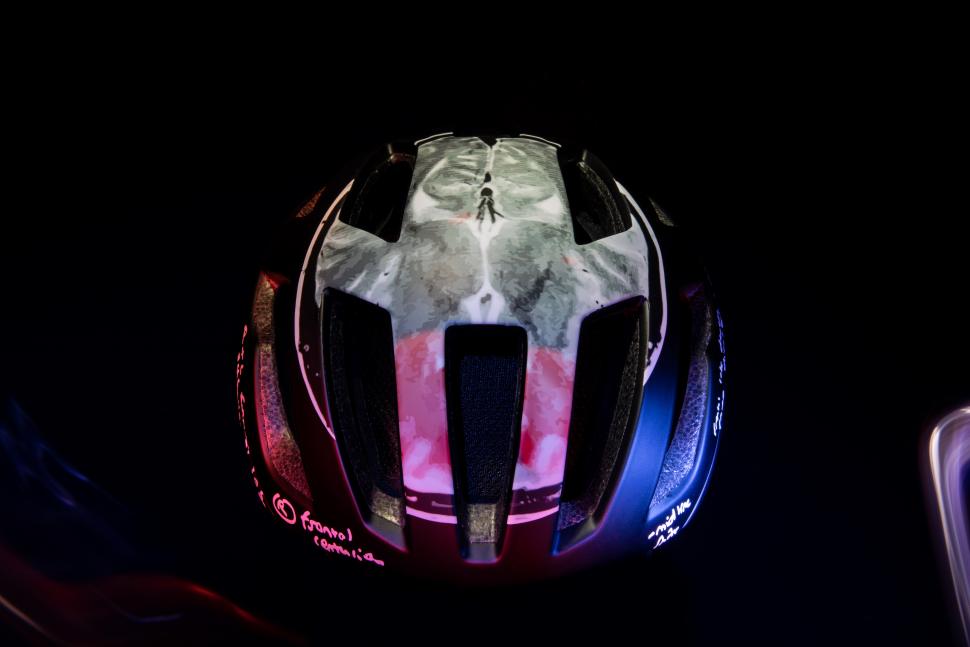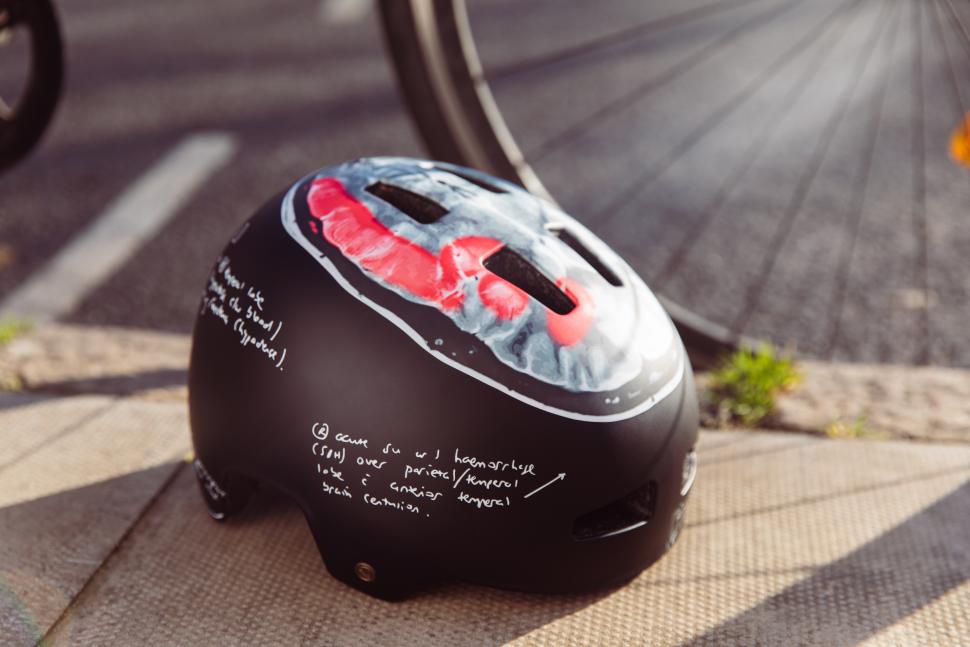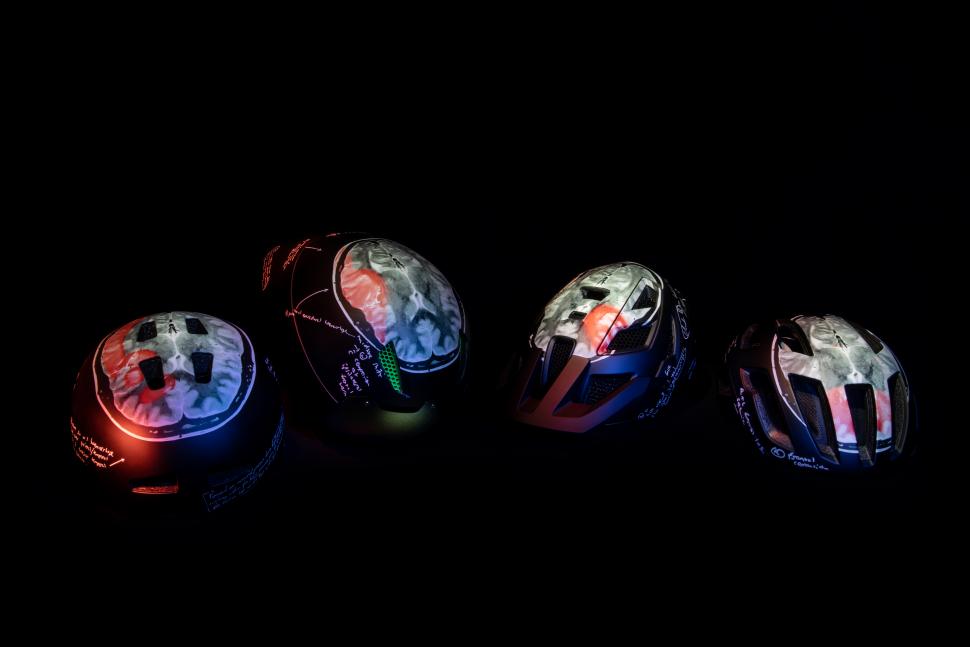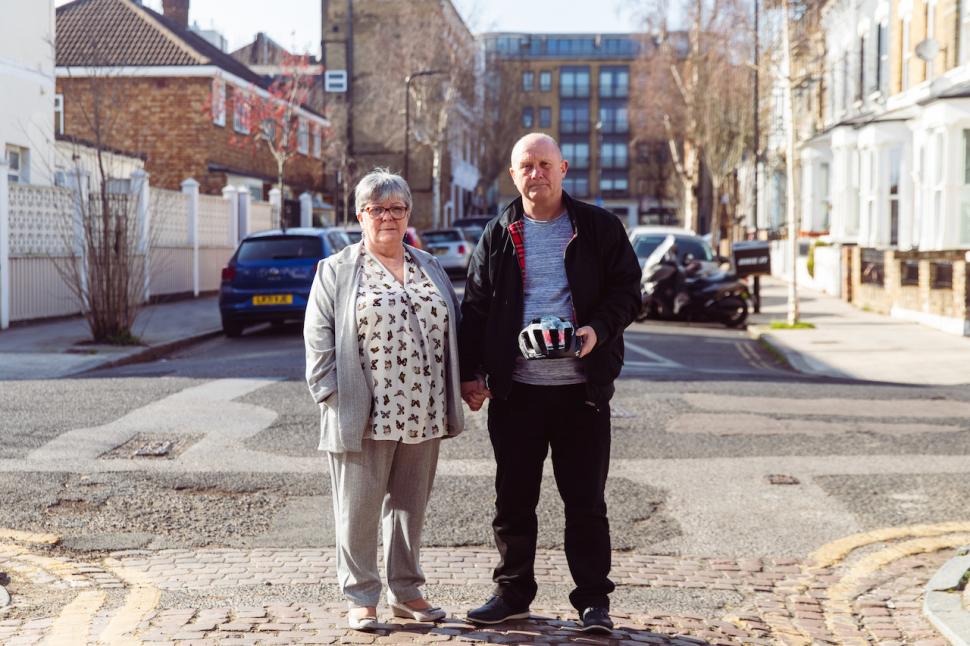- News
- Reviews
- Bikes
- Accessories
- Accessories - misc
- Computer mounts
- Bags
- Bar ends
- Bike bags & cases
- Bottle cages
- Bottles
- Cameras
- Car racks
- Child seats
- Computers
- Glasses
- GPS units
- Helmets
- Lights - front
- Lights - rear
- Lights - sets
- Locks
- Mirrors
- Mudguards
- Racks
- Pumps & CO2 inflators
- Puncture kits
- Reflectives
- Smart watches
- Stands and racks
- Trailers
- Clothing
- Components
- Bar tape & grips
- Bottom brackets
- Brake & gear cables
- Brake & STI levers
- Brake pads & spares
- Brakes
- Cassettes & freewheels
- Chains
- Chainsets & chainrings
- Derailleurs - front
- Derailleurs - rear
- Forks
- Gear levers & shifters
- Groupsets
- Handlebars & extensions
- Headsets
- Hubs
- Inner tubes
- Pedals
- Quick releases & skewers
- Saddles
- Seatposts
- Stems
- Wheels
- Tyres
- Health, fitness and nutrition
- Tools and workshop
- Miscellaneous
- Buyers Guides
- Features
- Forum
- Recommends
- Podcast
 Endura Project Heid
Endura Project HeidEndura designs "world's most graphic cycle helmets" featuring CAT scans of cyclists' brain injuries to encourage helmet wearing
Scottish-based cyclewear manufacturer Endura has designed a "one-of-a-kind" product, dubbed "the world's most graphic cycle helmet" using the CAT scans of cyclists who suffered brain injuries in life-threatening crashes, and cited "the risks too many cyclists continue to take" by not wearing one as the motivation for the project.
The brand said its research suggests almost half (45 per cent) of cyclists in the UK do not wear a helmet, something director Noah Bernard says it hopes to "encourage the cycling community to do" and not ignore "the risks too many cyclists continue to take" by not wearing one.
Named Project Heid, the four helmets will be auctioned on behalf of The Brain Charity and were created with input from Liverpool-based neurologists. They feature four CAT scans of real-life brain injuries suffered by cyclists in life-threatening crashes.
One features the scan of Ian Charlesworth, 62, who was struck by the driver of an HGV in 2019, while another features John Moroney's, a cyclist injured in a collision with the driver of a 4x4 in Bristol.
Both men were cycling without head protection, Endura is quick to point out, and suffered skull fractures, brain injuries and neurological abnormalities such as haemorrhage and contusion, leading to cognitive impairment struggles including memory loss, fatigue and vertigo.
"The one-of-a-kind helmets are intentionally provocative, quite literally showing the potential consequences if you choose to ride unprotected," Endura suggests.
Pushing the helmets alongside research to mark Brain Awareness Week, Endura says its study showed two-thirds of Brits are concerned about sustaining a brain injury whilst cycling.
"We understand the importance of ensuring that more people on Britain's roads and trails are wearing helmets," brand director Bernard said. "We want to encourage the entire cycling community to do so. Ian and John's accounts are eye-opening reminders of the risks too many cyclists continue to take, and we thank them for bravely helping us to raise awareness with their incredible stories."
Adding to the comments, Nanette Mellor, the CEO of The Brain Charity said: "We call our head our nut and think of it as a hard object, but our brain is extremely vulnerable.
"Our skull has been likened to a tough ceramic, which can shatter upon impact, while the brain inside is like a firm blancmange. Just how fragile our brain is shows how important the need for protection is. Our brain is the most complex structure in the universe, and the most important part of who we are.
"It runs our whole world, moves our body, makes our decisions, and tells us when to smile and what we can smell. It houses our most precious memories, hidden dreams and the thousands of subtle differences that make us who we are.
"The impact of damage to the brain can be catastrophic, and that's why we are proud to partner with Endura to draw awareness to the importance of wearing a helmet when cycling to protect your brain."
Last month, Channel 5 presenter Dan Walker said he was "glad to be alive" after being hit by a driver while cycling at a roundabout in Sheffield. Walker said his helmet "saved my life" and told his social media followers "if you're on a bike — get one on your head".
The 45-year-old claimed that a police officer and paramedics who attended the scene told him that he would not be here now if he was not wearing one, but in the inevitable debate that ensued others suggested prioritising helmets is an example of 'car-brained' victim-blaming culture, with safe infrastructure and action on dangerous and careless driving more important.
Chris Boardman, the former Olympic champion-turned-active travel champion, in 2014 described the "helmet issue" as a "massive red herring" which is "not even in the top ten of things you need to do to keep cycling safe or more widely, save the most lives".
Endura's announcement comes after the recent launch of its latest helmet technology, combining Koroyd technology, which the brand says absorbs energy on impact, with Mips, a brain protection system which helps reduce force transition. The importance of latest protective technologies is supported by research, Endura says, with the risk of traumatic brain injury upon peak accident impact reduced by up to 60 per cent when wearing a helmet that includes energy-absorbing technologies (such as Mips).
> Why is Dan Walker's claim that a bike helmet saved his life so controversial?
Helmet safety is of course a hotly debated topic, psychologist Dr Ian Walker of the University of Bath, concluding that motorists tend to give more space to cyclists not wearing helmets, therefore lowering the possibility of a collision.
A 2017 review by statisticians at the University of New South Wales found that, based on 40 separate studies, helmet use significantly reduced the odds of head injury, and that the probability of suffering a fatal head injury was lower when cyclists wore a helmet (though, the authors noted, helmets cannot eliminate the risk of injury entirely).
Another study from the same year, this time from Norway's Institute of Transport Economics, concluded – based on an overview of almost 30 years' worth of analysis – that bike helmets reduced head injury by 48 per cent, serious head injury by 60 per cent, traumatic brain injury by 53 per cent, facial injury by 23 per cent, and the total number of killed or seriously injured cyclists by 34 per cent.
However, while helmets have proved useful when it comes to lessening the potential severity of a serious head injury, other research points to less effectiveness when it comes to preventing concussion, a reality of their protective limitations recognised by only one in five competitive cyclists, according to a recent study.
Dan joined road.cc in 2020, and spent most of his first year (hopefully) keeping you entertained on the live blog. At the start of 2022 he took on the role of news editor. Before joining road.cc, Dan wrote about various sports, including football and boxing for the Daily Express, and covered the weird and wonderful world of non-league football for The Non-League Paper. Part of the generation inspired by the 2012 Olympics, Dan has been 'enjoying' life on two wheels ever since and spends his weekends making bonk-induced trips to the petrol stations of the south of England.
Latest Comments
- brooksby 11 min 21 sec ago
Trust me: my estate will never reach levels where inheritance tax becomes due
- FionaJJ 22 min 22 sec ago
At risk of being cynical, and stereotyping the police, it's so they don't have to leave the comfort of their panda cars and pursue on foot when...
- Wardy74 29 min 10 sec ago
Most, if not all car sales businesses spill over from their premises onto surrounding streets pavements and cycle paths. One local to me have been...
- andystow 31 min 56 sec ago
But now you don't have to. Allegedly.
- chrisonabike 35 min 31 sec ago
Apparently an erotic ring to it for some. What about armour-clad Segway-ists though?
- Patrick9-32 39 min 49 sec ago
Since Kona's rebirth after they kept the stinky for waaaay too long they have been one of the most consistently desireable mountain bike brands. If...
- luk 1 hour 17 min ago
Device with built in battery?? Shocking!!
- richliv 1 hour 41 min ago
£5500 is same price as the equivalent 2020 Trek Madone (SL7) which is now about 50% more. Hopefully this will drive stupid prices down a bit, I...
- RNTRMP 2 hours 4 min ago
" The lightest pedal system currently on the market" is debatable, the Xpedo Thrust SL are 168g a pair, KEO compatible, and a fraction of the cost.



Add new comment
37 comments
Oh no, helmets again...
I wonder if they'll do a customised version? Send them your own CAT scan and get it printed up?
If the company wants to both protect people and promote sales of their helmets, I suggest starting with the activities that generate the largest numbers of brain injury fatalities. Those data are not difficult to find. Please note that motoring and walking for transportation are higher on the list than cycling. In fact, walking around one's home is way up there. "House helmets" could be a major new market!
Oh, that market will be opened up soon enough.
"One features the scan of Ian Charlesworth, 62, who was struck by the driver of an HGV..."
Endura,
Are your helmets designed to protect cyclists from the forces involved in collisions with 44 tonne lorries?
I like Endura's products, but if they want to be patronising wankers I can always take my business somewhere else.
Given that most plastic hat manufacturers are careful NOT to make claims about injury prevention, it will be very interesting to see what happens the first time a customer who made a purchase based on this campaign falls off and clonks their bonce . . . potential PR minefield?
They will be directed to the disclaimer that says something like "Please note that this helmet will not protect you in all foreseeable collisions."
Endura promoting helmets with the aid of a charity - No conflict of interests there then.
I'm told that there may be a job coming up as Chairman of the BBC, perhaps the CEO should go for it.
Is he a tory supporter and has he arranged a loan for the most corrupt PM ever?
Marketing something that does not work very well as a life saving product could be described as duplicitous.
A characteristic of our current crop of politicians?
True, but they don't market it as life-saving; they leave that to the helmet zealots.
The comparison I was making inside my head was the life changing promises that came with Brexit. More than half the population bought into them.
We can rely on you to label people who suggest that helmets can prevent injuries as 'zealots' while you go around telling people that helmets kill people. Good one.
Blimey, you seem incredibly angry about a business doing something they genuinely believe is the right thing. They're not exactly Nestle, backing the Russians to blow up Ukrainian children in their houses.
Ignoring the pro and cons of helmet wearing and the issues of if you should or not (I often don't as I cycle mainly in NL) is the issue that... most of the sports riders I see with helmets and many many of the London commuters i see wearing helmets... most of them are not done up tightly at all - with clearly loose straps not tightended done up. Good luck with that if you have a crash and your helmet is practically off your head before you even hit the hard ground...
Personally I would rather agree with Chris Boardman's take on helmet wearing rather than a commercial organisation that is hoping to make a great profit encouraging riders to strap overpriced polystyrene mouldings to your head.
If you want to encourage more people to cycle, convincing them it is so dangerous that you have to wear safety equipment if you want pop down the butchers for half a kilo of dingos kidneys, is the wrong way to do it.
If the helmet fanatics were really serious then why not encourage cyclists to wear full face motorbike helmets?
Do these obsessives wear a helmet when in the bath in case they slip when getting out or what about when running, easy to trip and bang your head after all.
EC1V 3QJ - don't go there... but unfortunately this article already has.
Agree with you. However although this is frequently trotted out by the more "rights and responsibilities" (or just "buy a car already") folks there are several non-victim-blaming reasons for people being interested in head protection for cyclists (see infinite previous threads on this).
People probably won't like to hear this, but helmets prevent injuries, and that's just a fact. There's no need to get emotional about it. If you don't want to wear a helmet, that's fine, but it's your choice and you know the risks. This helmet helps illustrate what happens when you don't wear a helmet. And you can guarantee it wouldn't have been nearly as bad if they had been. Don't blame others for your injury when you could have prevented it yourself.
No, you can't guarantee that, but you'll still blame someone for not wearing a helmet.
This helmet illustrates what happens when you get a brain injury. I've not worn a helmet in the past and this didn't happen, so your logic is false.
Car strikes are usually the cars fault, see the evidence. It's freely available.
The brand said its research suggests almost half (45 per cent) of cyclists in the UK do not wear a helmet, something director Noah Bernard says it hopes to "encourage the cycling community to do" and not ignore "the risks too many cyclists continue to take" by not wearing one.
No cyclist takes a risk by not wearing a helmet; this is total, complete and utter 100% advertising BS from a company that makes money by scaring people into wearing helmets. As we've seen only too recently, helmets don't prevent concussion and don't reduce the death rate of cyclists, the only reliable metric.
The fact that a commercial company will exploit its customers in such a way is despicable. And that's me being polite. Can't you find something useful to do Noah? Not just making money out of frightening people? This is the ultimate in capitalism; frighten people with exaggerated risks, then sell them something that makes them feel safer without actually making them safer. And make sure you include a disclaimer so that they can't sue you when it doesn't work!
I really, really can't understand the motivation of people who do this; explain it to me Noah. How do you feel about making money from people's gullibility? Have you got a range of helmets with the brain scans of cyclists who were wearing helmets when they were killed?
Calm down
Burt when she sees anything vaguely pro helmet related.
I think you could ask that question of the entire insurance industry, although suspect the response, if any, would be a shrug.
Not sure what the insurance industry has to do with this? Contrary to popular opinion, and not as lied about by event organisers, they don't mandate helmets.
Emotional blackmail.
Will there be car occupant helmets with the same designs and nannying promotional slant?
They already have helmets that are a perfect match for drivers, all the other helmets with no obvious brains showing.
Shurely a warning
notice attached to the binnaclevideo that plays on the in-drive entertainment screen featuring Ashley Neal saying:*Ashley Neal's measured but serious voice*
Warning - driving increases the risk you or your passengers will die or be seriously injured. It can lead to you 'innocently killing' vulnerable road users which can seriously affect your mental health. How would your family feel if you did that then killed yourself?
Pollution from vehicles like this one (even "emit elsewhere" electric ones) can shorten the lives of those living around you.
Is your drive today really necessary? Or is there another way you could make this trip?
I'd certainly chip in a few quid if he's up for assisting with this public safety effort!
Is this the same endura who sponsor an athlete who rides his bike off buildings asking people to not take extra risks? Like their clothes but I'm disappointed with this nonsense (and ultimately attempt to shift product).
Pages